Special Report
This Is the World's Longest River, for Now
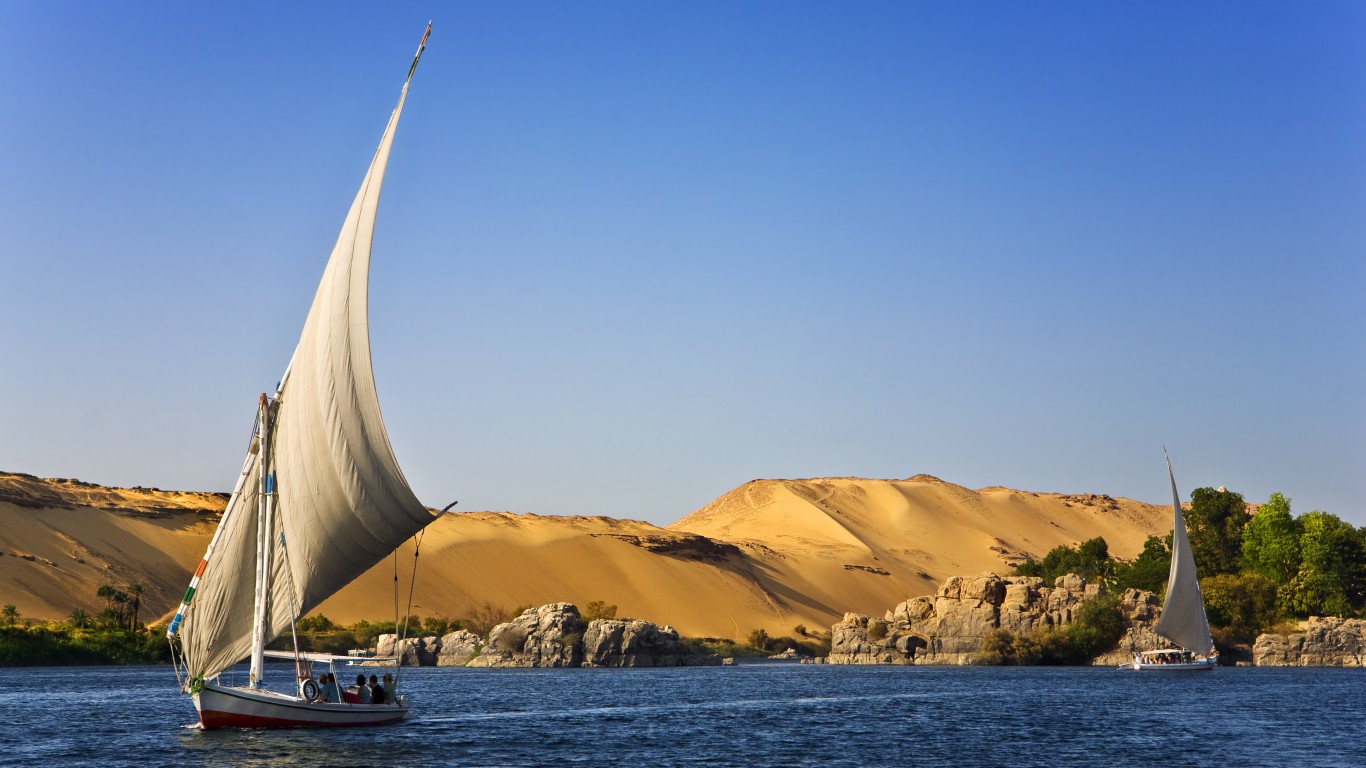
Published:
Last Updated:

The Nile, the world’s longest river at 4,132 miles, stretches from Central Africa to Egypt, where it empties into the Mediterranean Sea. It is the drainage basin for several of Africa’s largest nations, including the Democratic Republic of the Congo, Kenya, and Ethiopia. It is both a source of fresh water and a means of transportation by boat.
The Nile has two major tributaries. The White Nile, probably the better known of the two, starts at Lake Victoria, which is located in Tanzania, Kenya, and Uganda. The Blue Nile is the other tributary.
Whether the Nile will remain the world’s longest river depends on climate change, which has affected lakes and rivers across the world. The only river that could become longer than the Nile is the Amazon, which is 4,000 miles long. The difference in length between the two rivers is about the same as the distance from New York City to Hartford, Connecticut.
Forecasting the future of the Nile’s length is extremely complex, and any forecast is inconclusive. For example, the world’s oceans are expected to rise because of global warming. The parts of the world this will affect are educated estimates, but are not certain. Some of the largest lakes in the U.S. West have lost substantial amounts of water. This includes the Great Salt Lake, the largest inland salt lake in the United States. It includes the level of the Colorado River, particularly as it approaches the Hoover Dam, and Lake Mead, which supplies water to much of the areas around it. This state has the worst drought in America.
The Nile may not lengthen, but it could be a source of terrible flooding. Monsoons in Ethiopia send massive volumes of water downstream to Egypt. The effective level of this water is expected to drop eventually, however, because of climate change. Here are 25 cities where rising seas could leave millions homeless
According to QZ.com, some projections suggest that:
“the amount of rain in the Upper Nile basin could increase by up to 20%.” However, more recent research also suggests that despite the increased rainfall, “devastating hot and dry spells are projected to become more frequent in the Upper Nile basin,” causing increased water scarcity. (Not Egypt, but this country is least prepared for climate change.)
Additionally, climate events thousands of miles away also are having an effect. The Climate News Network reports how the Nile flow is affected by the cycle in Pacific temperatures. Already in 2015, an intense El Niño year, there was a drought in Egypt. In 2016, La Niña was linked to high flooding. All this suggests that years with normal flow and temperatures will be fewer, with more years of flooding or drought.
What will happen to the length and route of the Nile? The only thing certain is that it will change.
Click here to see the full list of the widest and longest rivers
Click here to see our detailed findings and methodology

40. Salween River
> Length: 1,500 miles
> Source: T’ang-ku-la Mountains, Tibet
> Outflow: Andaman Sea
[in-text-ad]
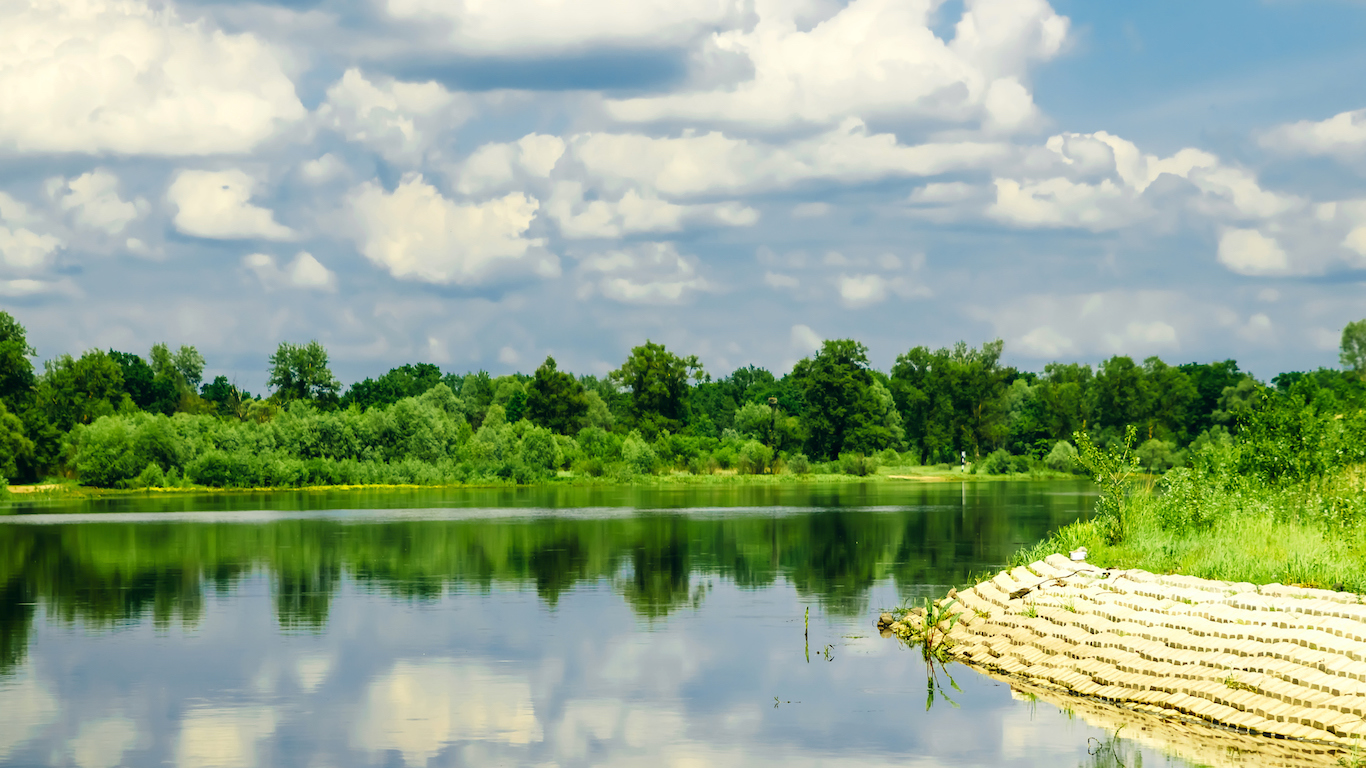
39. Ural River
> Length: 1,509 miles
> Source: Ural Mountains, Russia
> Outflow: Caspian Sea

38. Ishim River
> Length: 1,522 miles
> Source: Niyaz Hills, Kazakhstan
> Outflow: Irtysh River, Russia

37. Pilcomayo River
> Length: 1,550 miles
> Source: Andes Mountains, Bolivia
> Outflow: Paraguay River, Paraguay
[in-text-ad-2]

36. Ganges River
> Length: 1,560 miles
> Source: Himalayan Mountains, India
> Outflow: Bay of Bengal
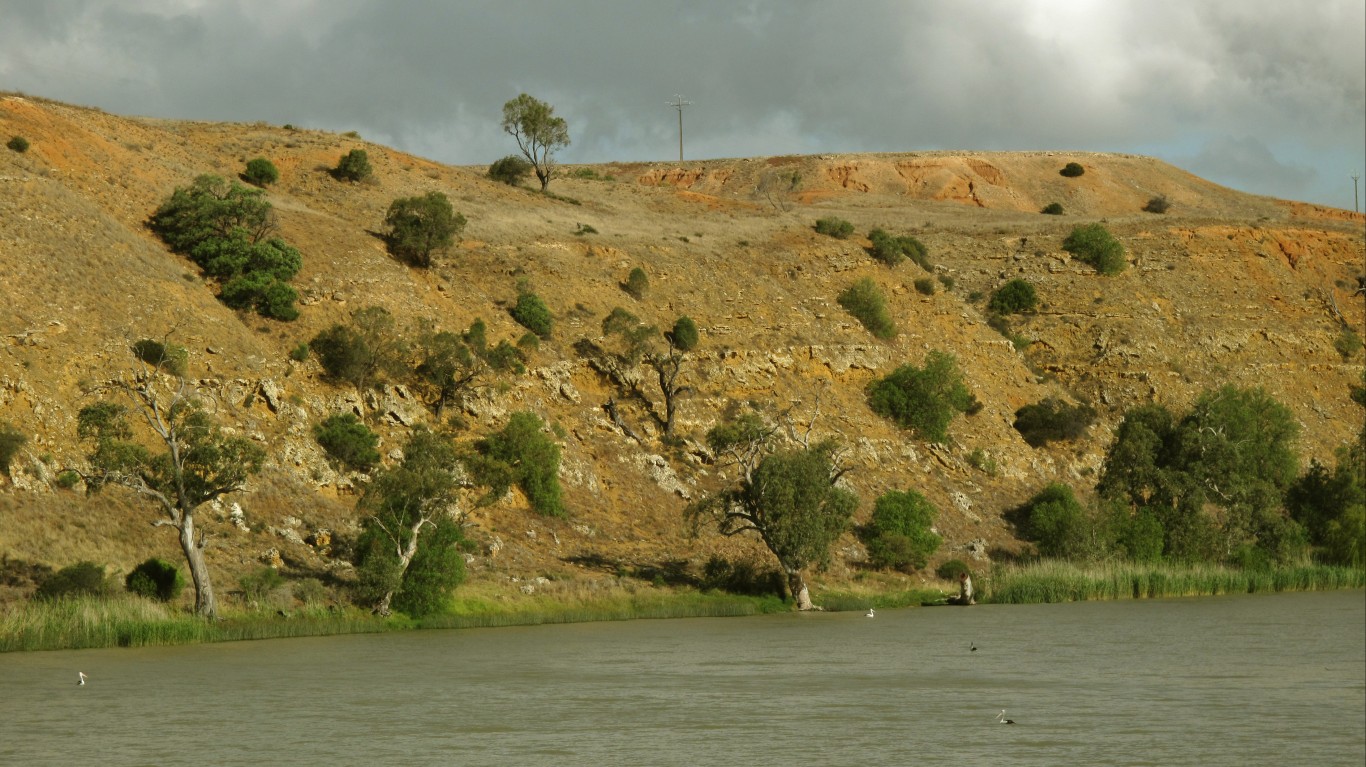
35. Murray River
> Length: 1,570 miles
> Source: Snowy Mountains, Australia
> Outflow: Indian Ocean
[in-text-ad]
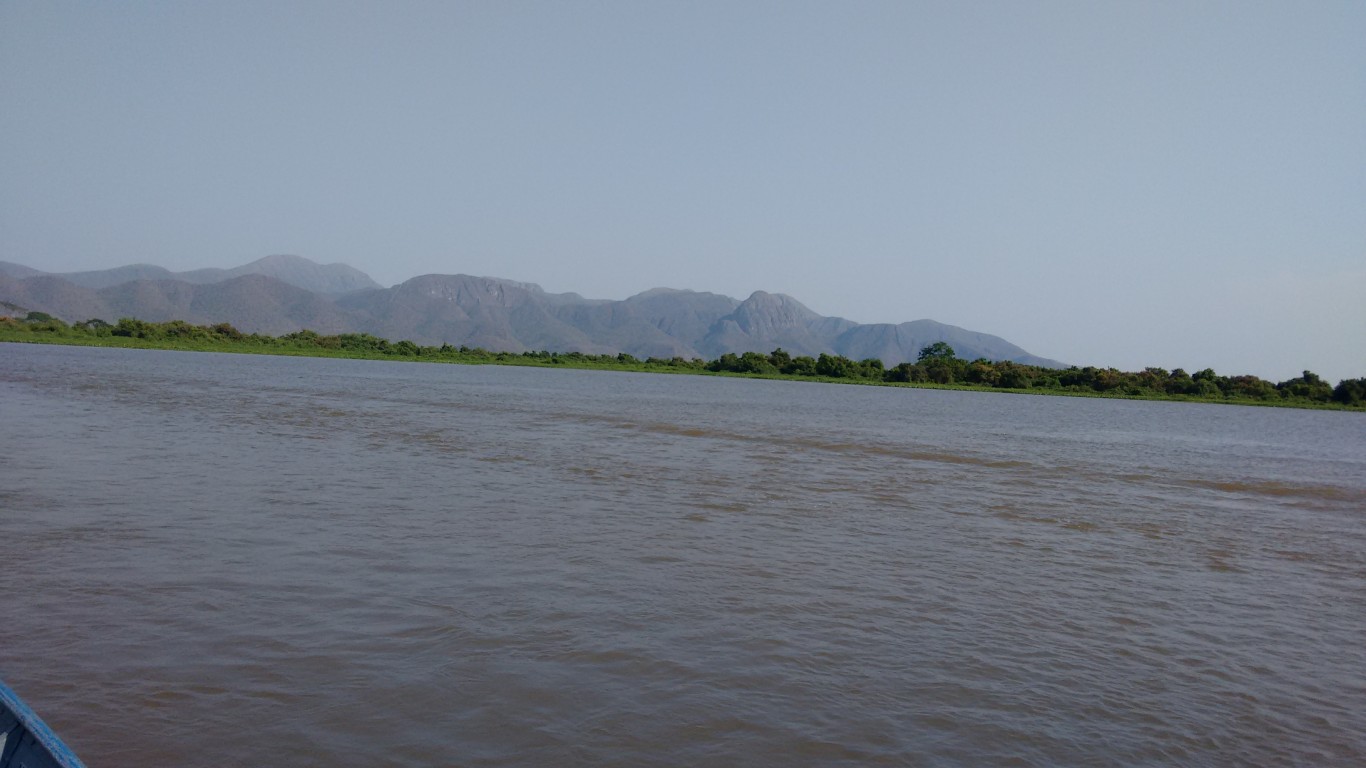
34. Paraguay River
> Length: 1,584 miles
> Source: Mato Grosso, Brazil
> Outflow: Paraná River, Paraguay
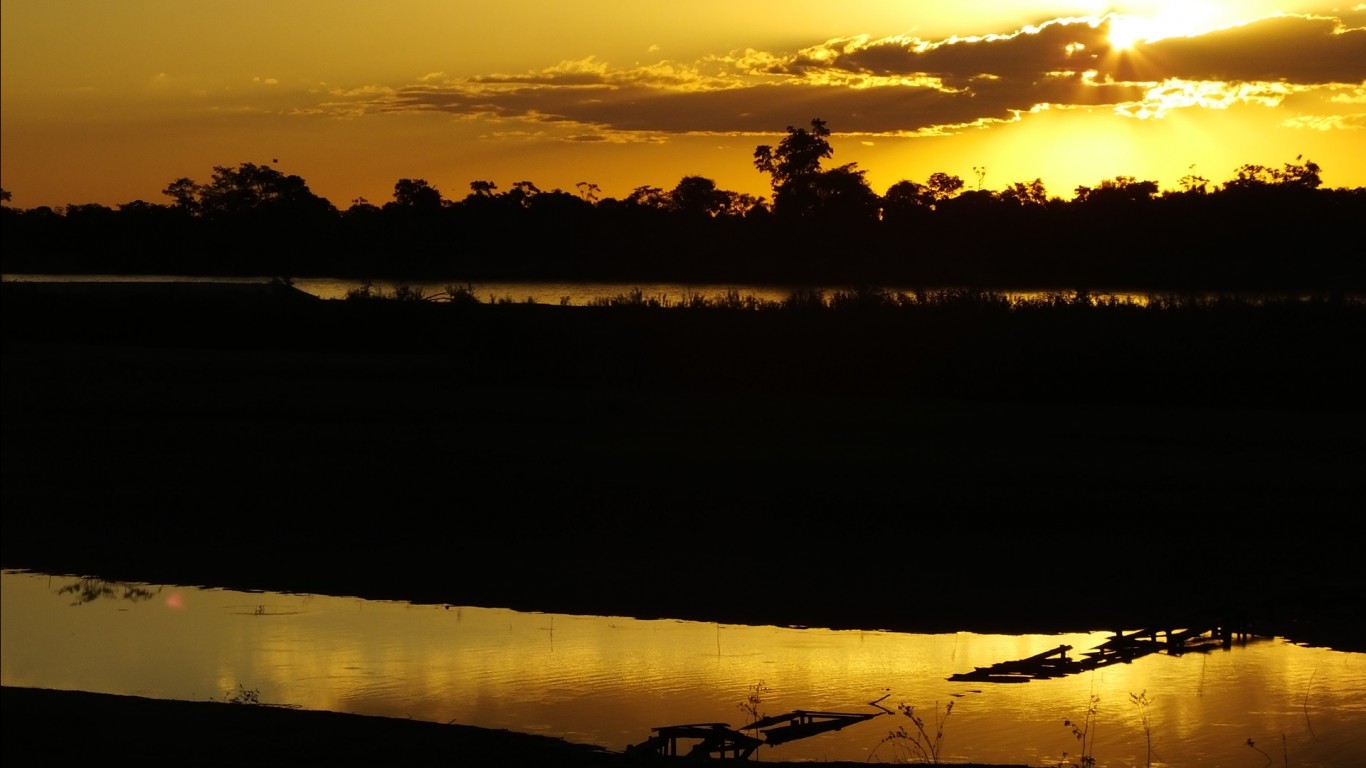
33. Araguaia River
> Length: 1,632 miles
> Source: Brazilian Highlands, Brazil
> Outflow: Tocantins River, Brazil
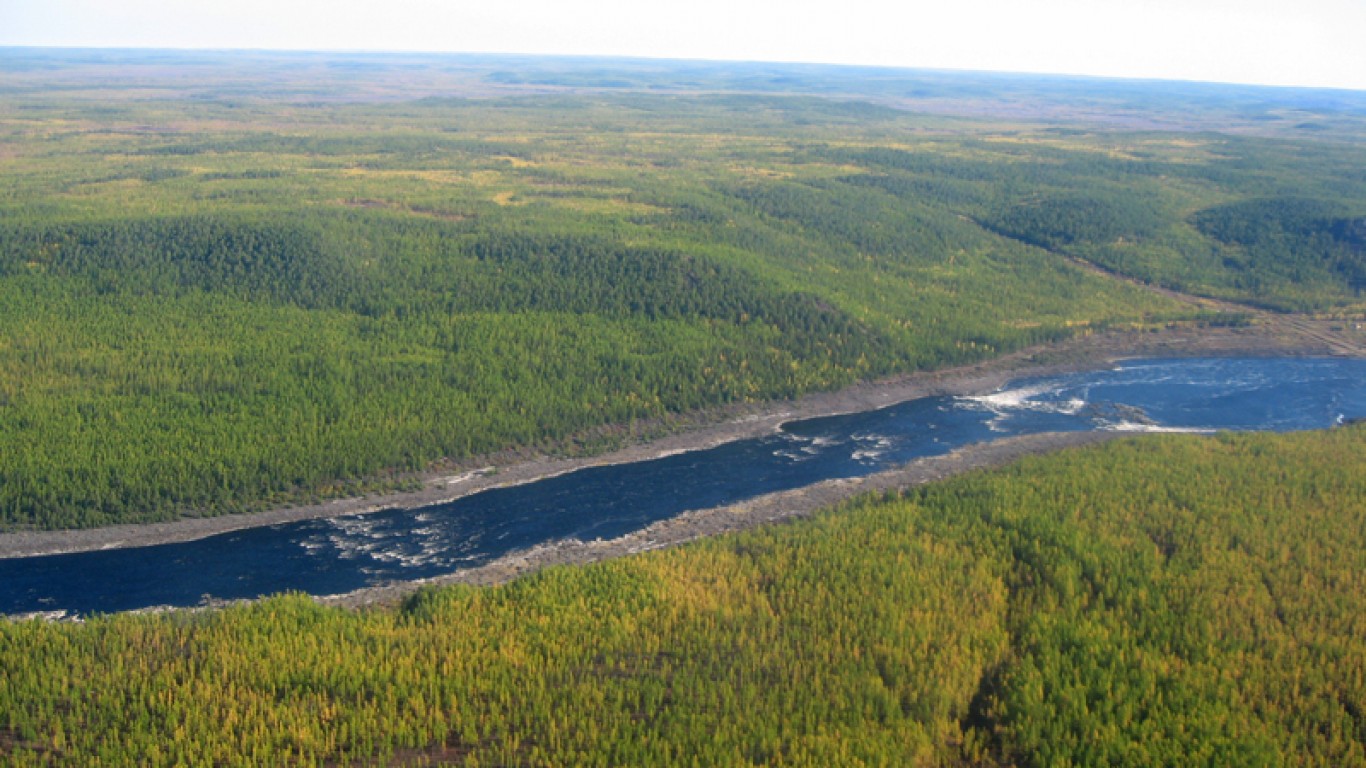
32. Vilyuy River
> Length: 1,647 miles
> Source: Central Siberian Plateau, Russia
> Outflow: Laptev Sea
[in-text-ad-2]
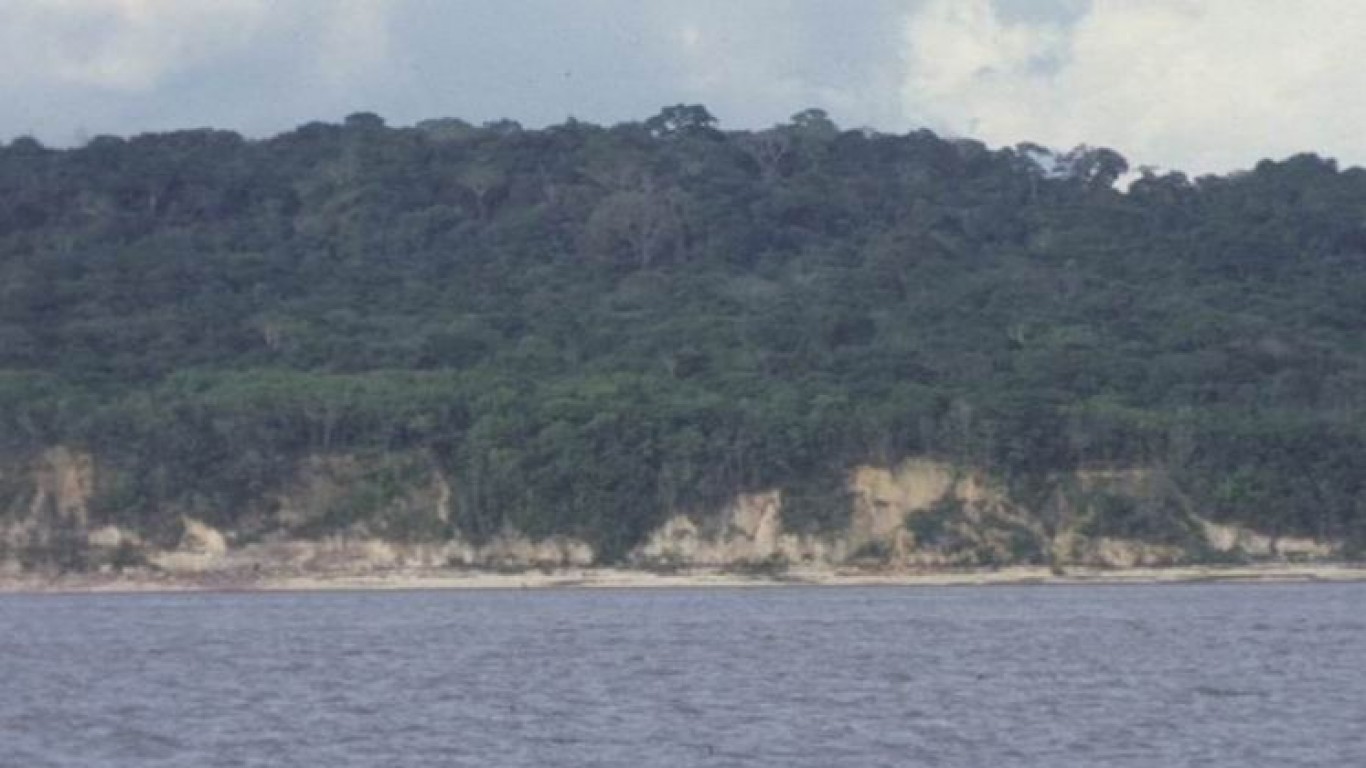
31. Tocantins River
> Length: 1,677 miles
> Source: Goiás, Brazil
> Outflow: Atlantic Ocean, Brazil
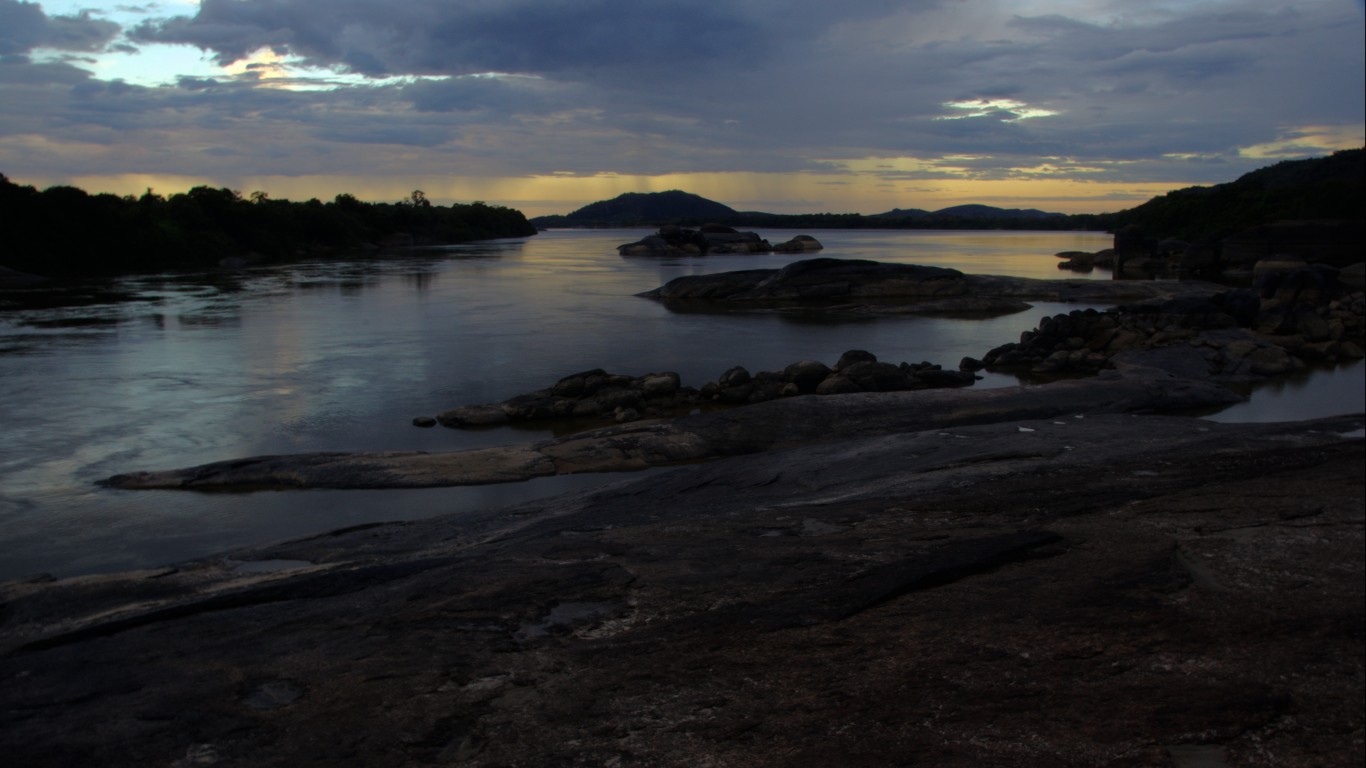
30. Orinoco River
> Length: 1,700 miles
> Source: Guiana Highlands, Venezuela
> Outflow: Atlantic Ocean, Venezuela
[in-text-ad]
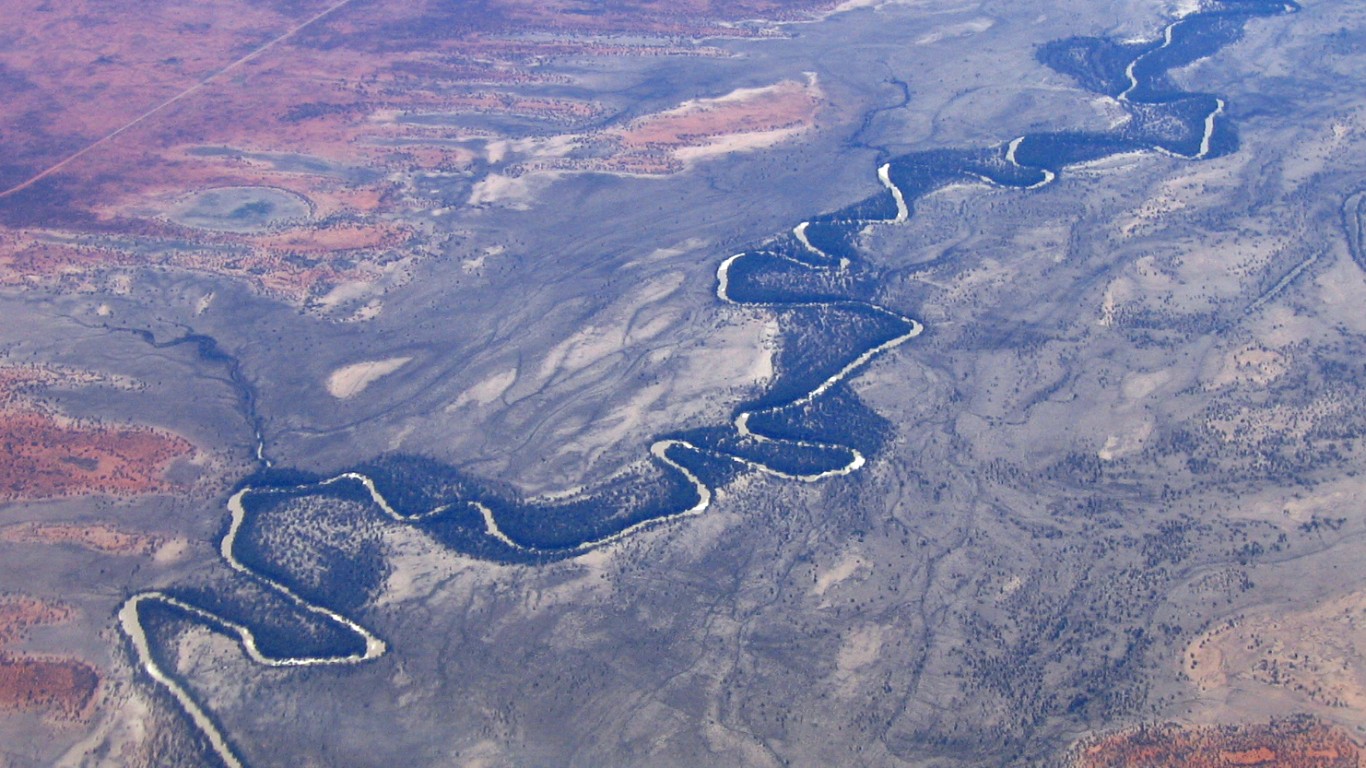
29. Darling River
> Length: 1,702 miles
> Source: Severn River, Australia
> Outflow: Murray River, New South Wales, Australia

28. Euphrates River
> Length: 1,740 miles
> Source: Karasu and Murat rivers, Turkey
> Outflow: Persian Gulf
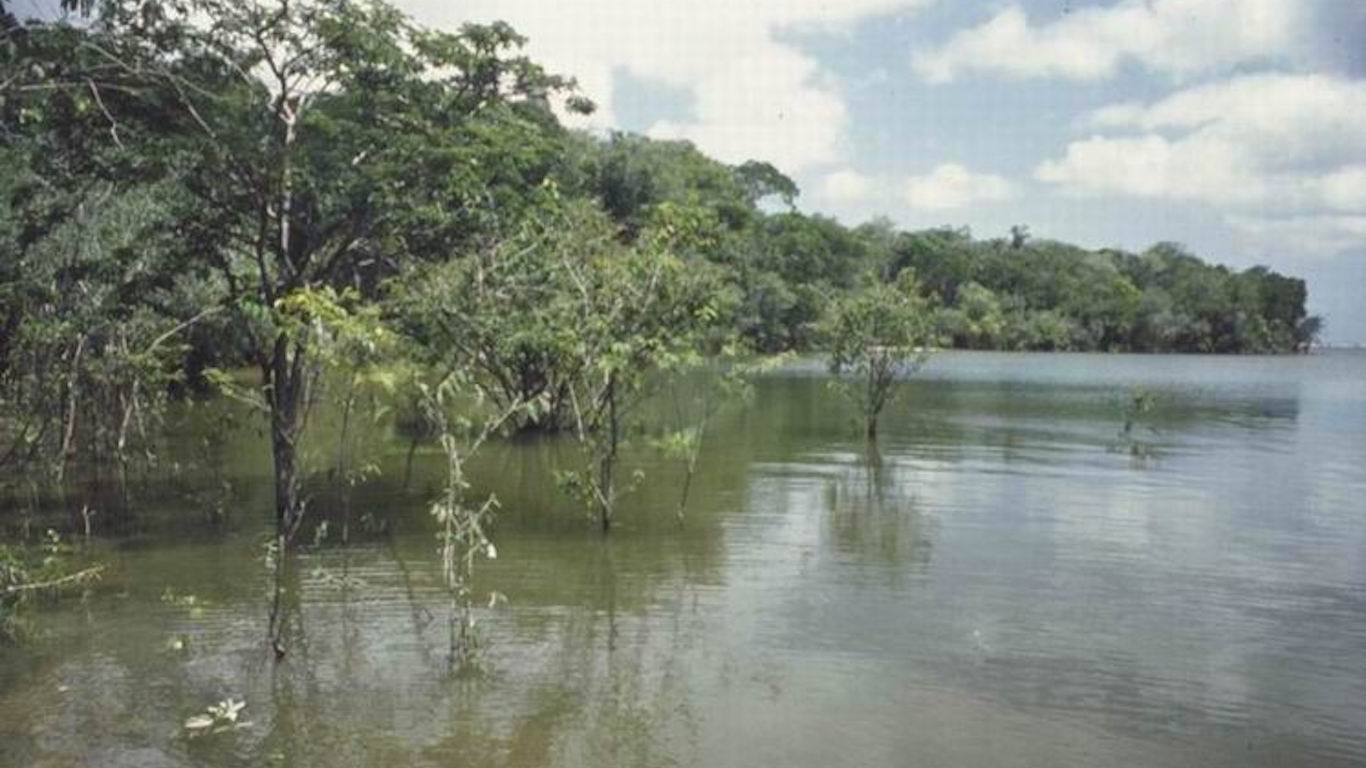
27. Japurá River
> Length: 1,750 miles
> Source: Caquetá River, Colombia
> Outflow: Solimões River, northern Brazil
[in-text-ad-2]
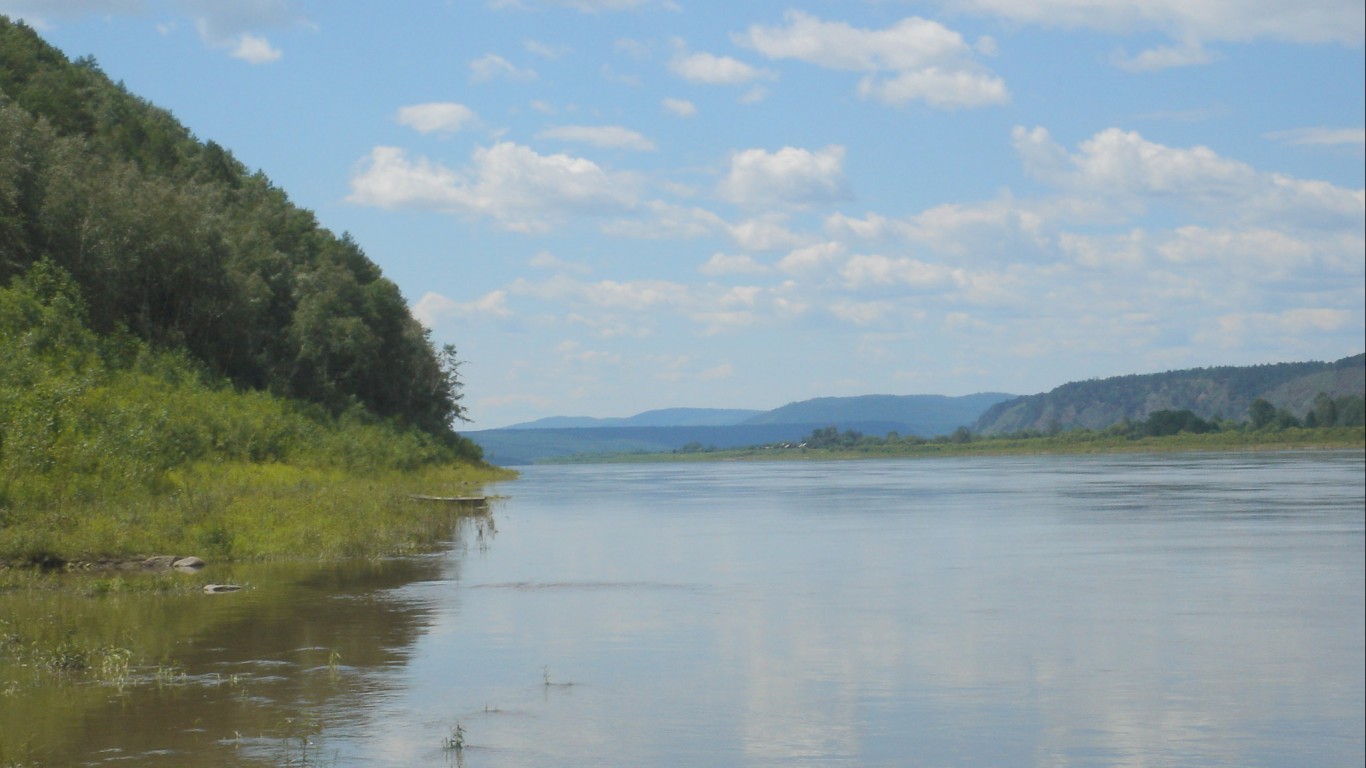
26. Amur River
> Length: 1,755 miles
> Source: Shilka and Argun rivers, Russia
> Outflow: Tatar Strait
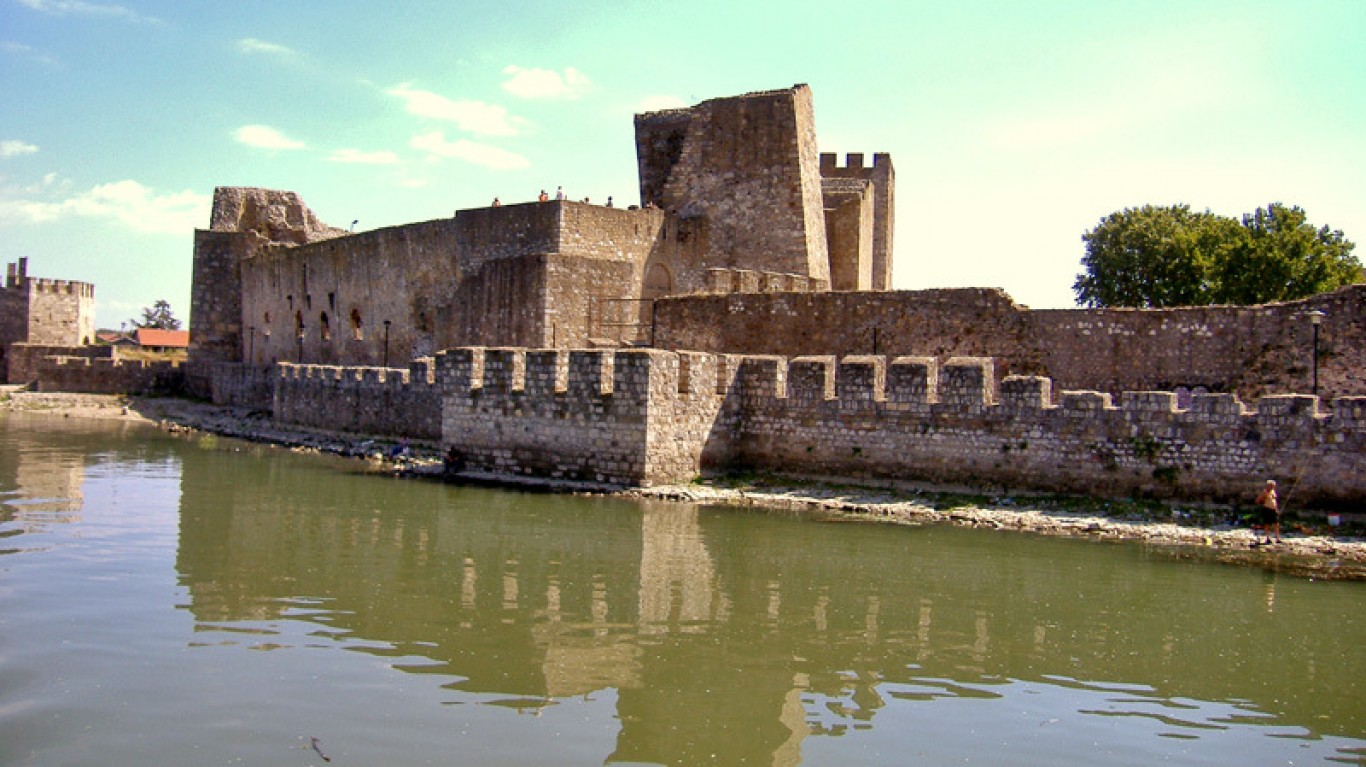
25. Danube River
> Length: 1,770 miles
> Source: Brigach and Breg rivers, Germany
> Outflow: Black Sea
[in-text-ad]
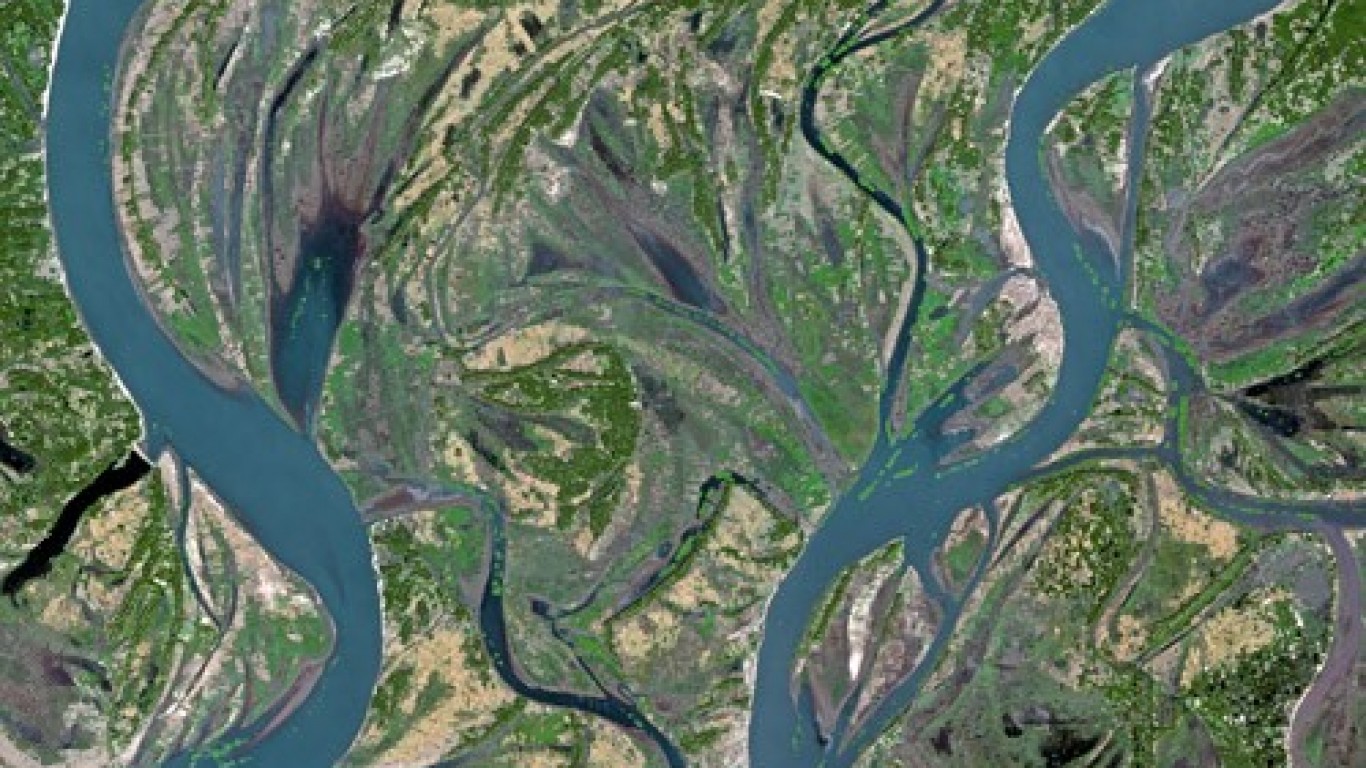
24. Brahmaputra River
> Length: 1,800 miles
> Source: Himalayan Mountains, Tibet
> Outflow: Ganges River, Bangladesh
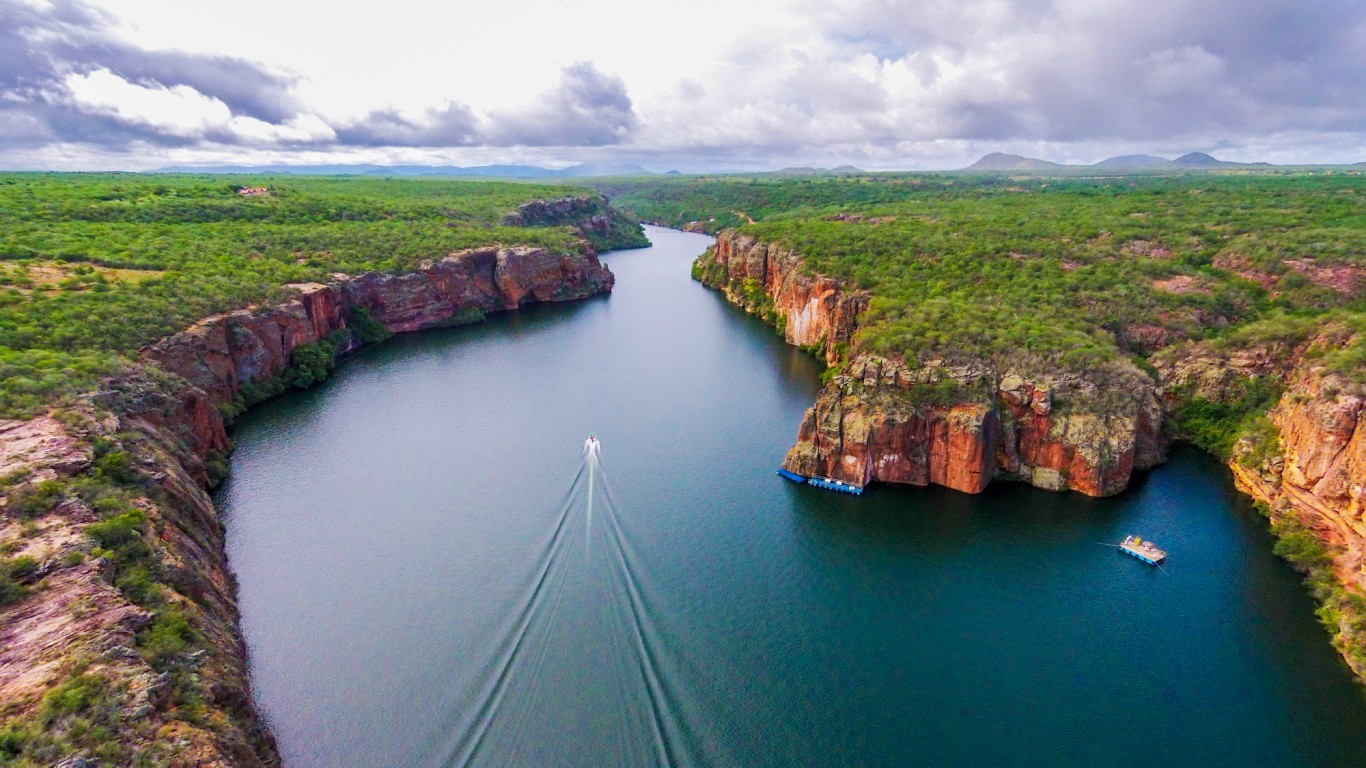
23. São Francisco River
> Length: 1,811 miles
> Source: Canastra Mountains, Brazil
> Outflow: Atlantic Ocean, eastern Brazil
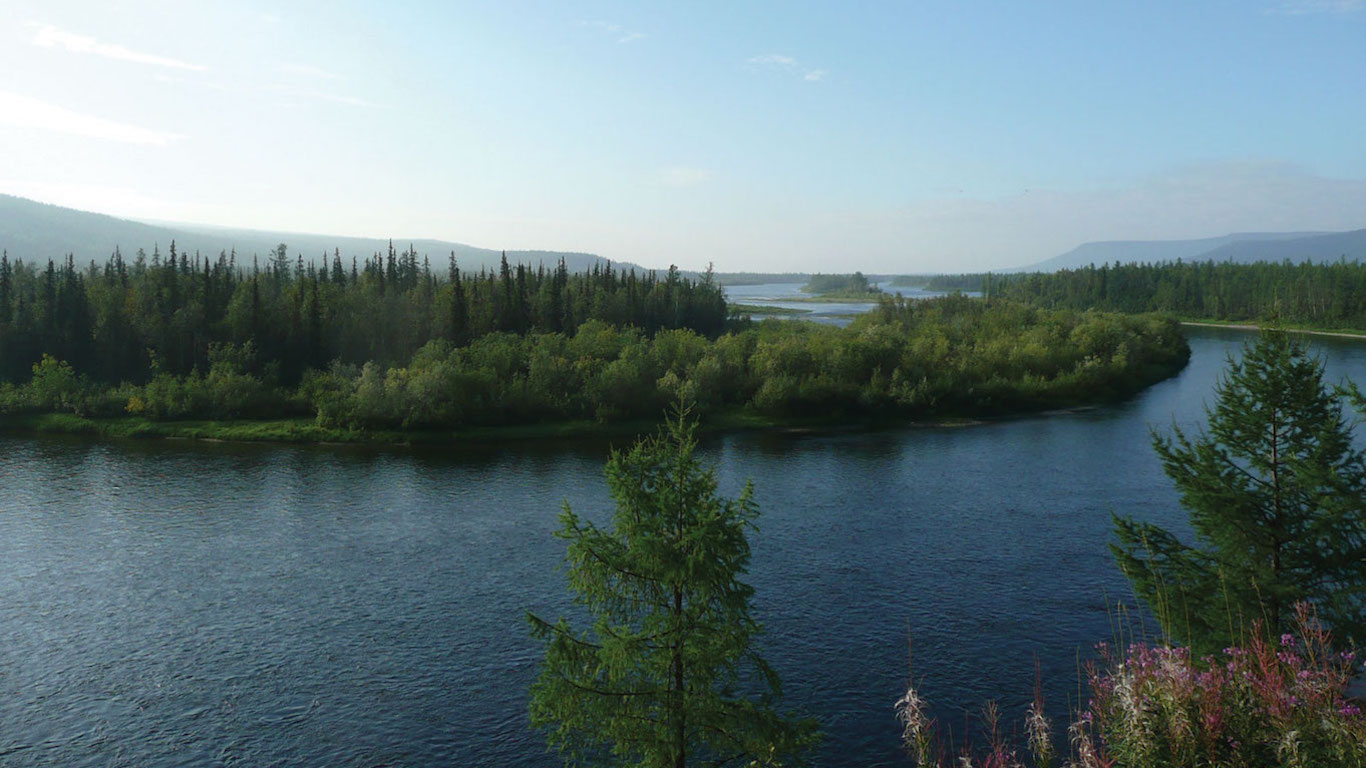
22. Lower Tunguska River
> Length: 1,857 miles
> Source: Central Siberian Plateau, Russia
> Outflow: Yenisey River, Russia
[in-text-ad-2]
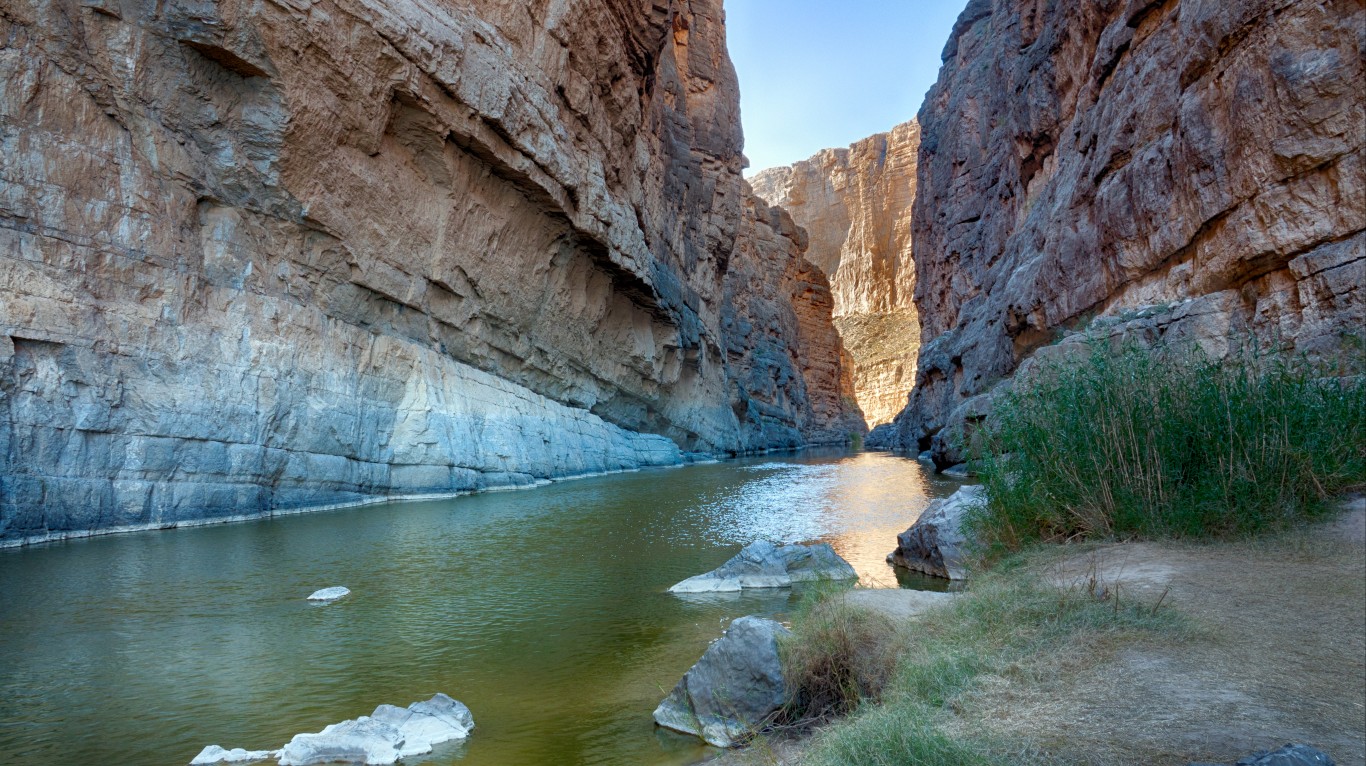
21. Rio Grande River
> Length: 1,900 miles
> Source: San Juan Mountains, Colorado
> Outflow: Gulf of Mexico
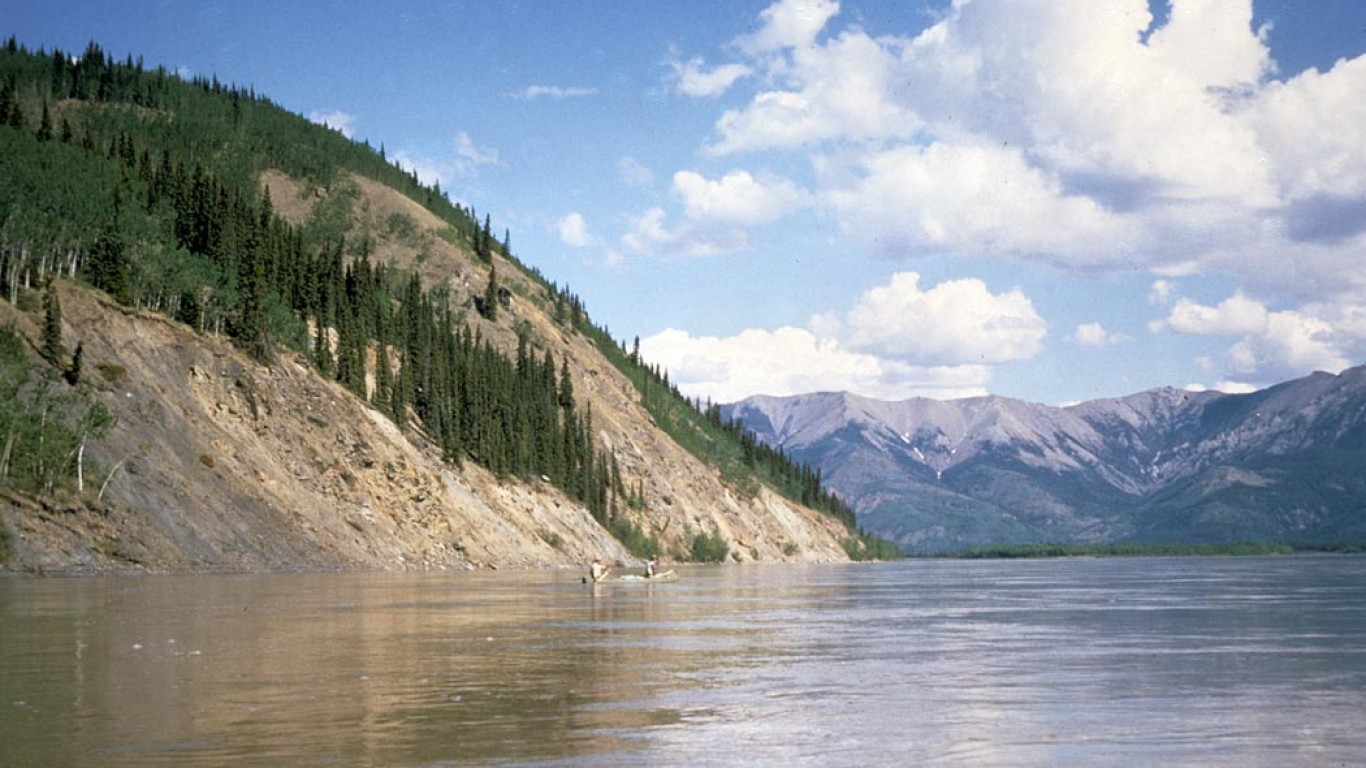
20. Yukon River
> Length: 1,980 miles
> Source: McNeil River, British Columbia, Canada
> Outflow: Bering Sea
[in-text-ad]
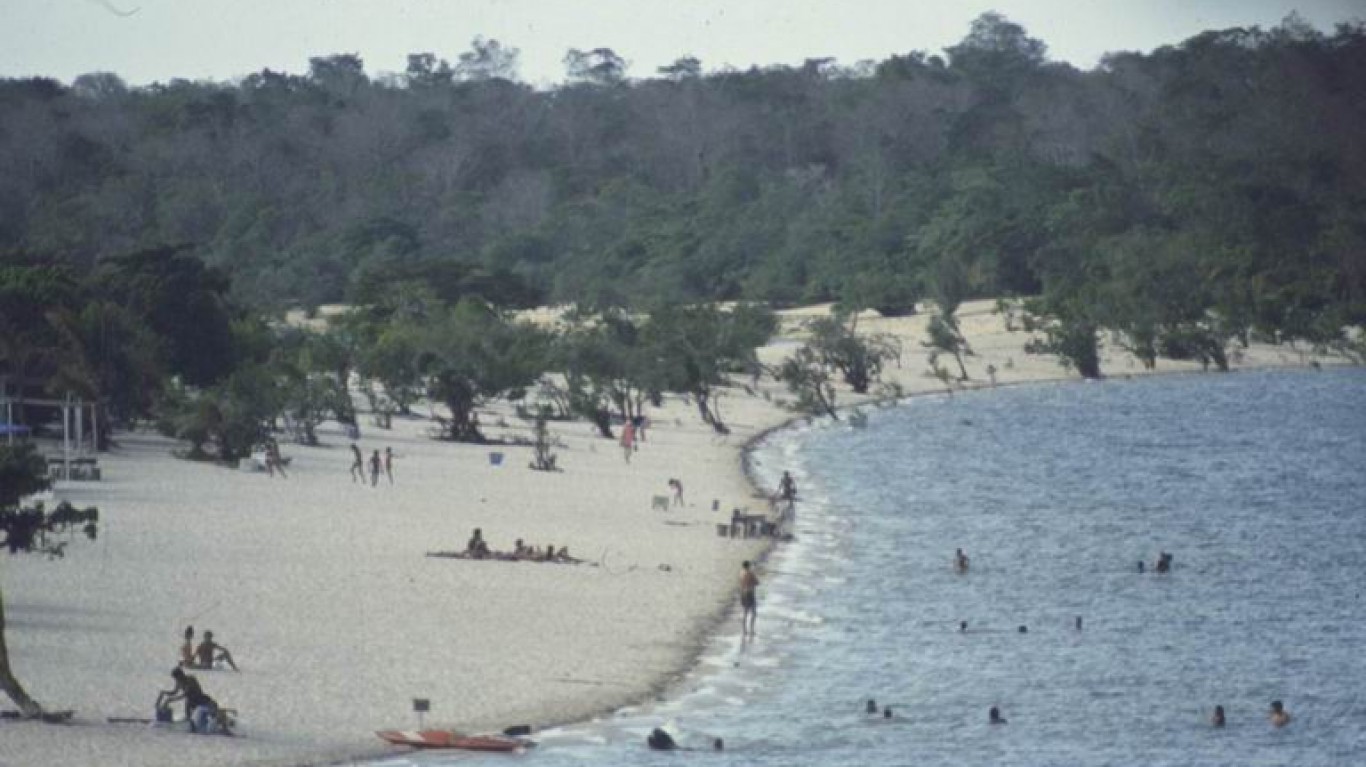
19. Purus River
> Length: 1,995 miles
> Source: Ucalayi Highlands, Peru
> Outflow: Amazon River, northern Brazil
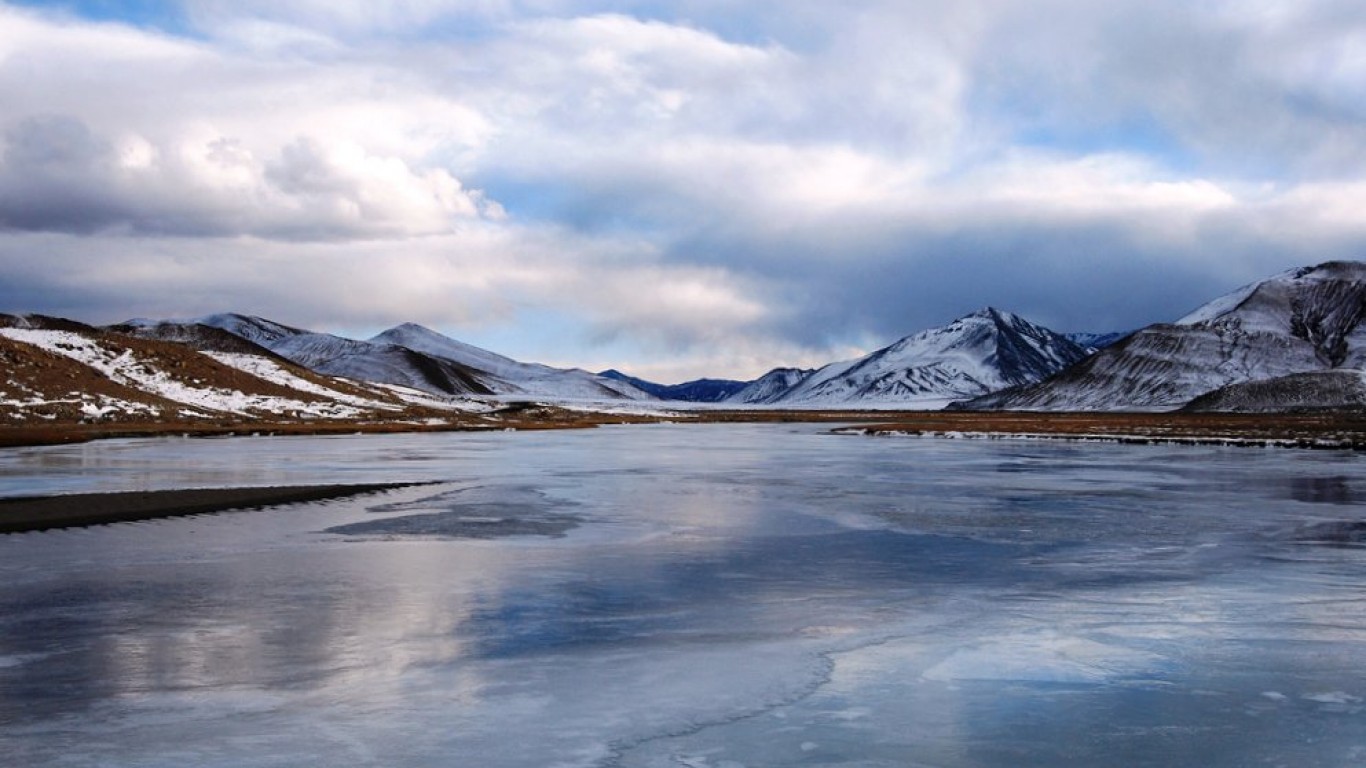
18. Indus River
> Length: 2,000 miles
> Source: Kalish Ranges, Tibet
> Outflow: Arabian Sea, Pakistan
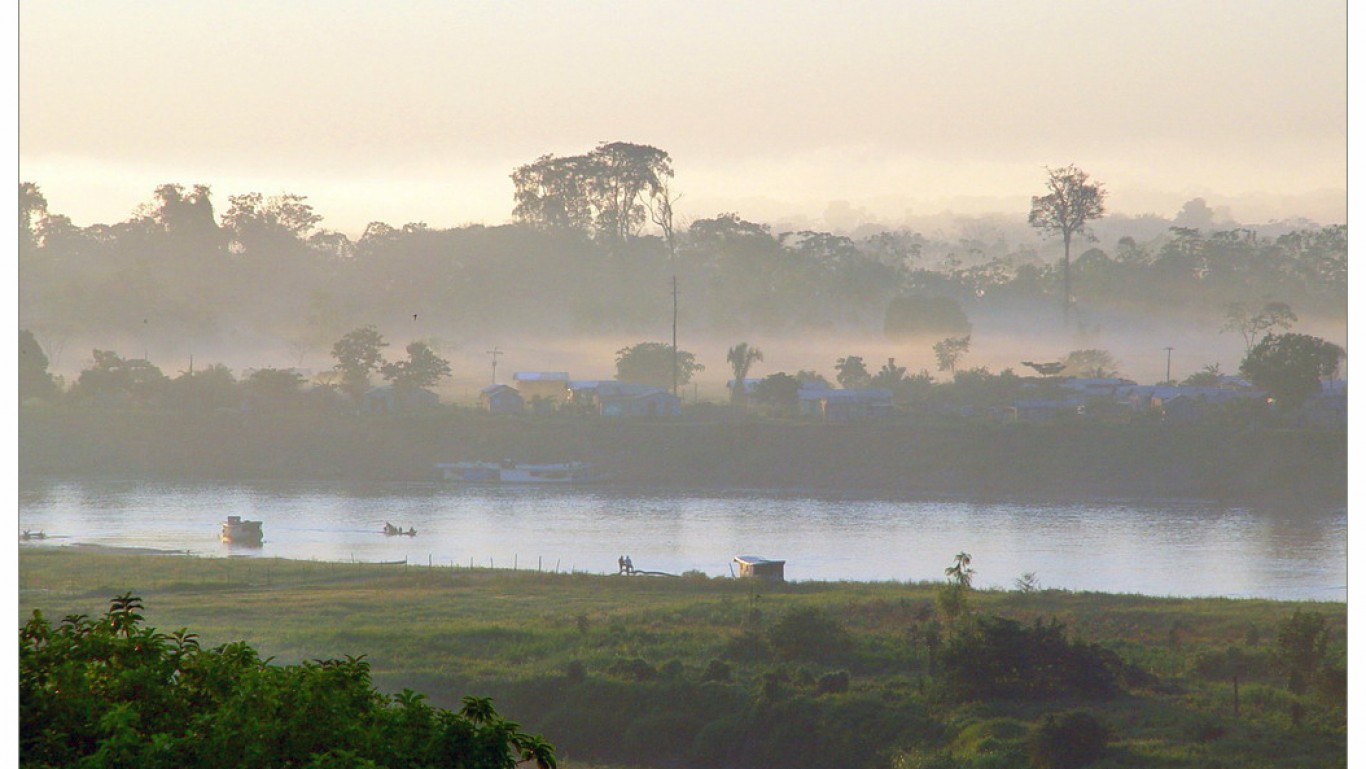
17. Juruá River
> Length: 2,040 miles
> Source: Ucalayi Highlands, Peru
> Outflow: Amazon River, northern Brazil
[in-text-ad-2]

16. Madeira River
> Length: 2,082 miles
> Source: Mamoré and Beni rivers, Bolivia
> Outflow: Amazon River, northern Brazil

15. Yenisey River
> Length: 2,167 miles
> Source: Kyzyl, Republic of Tyva, Russia
> Outflow: Kara Sea
[in-text-ad]
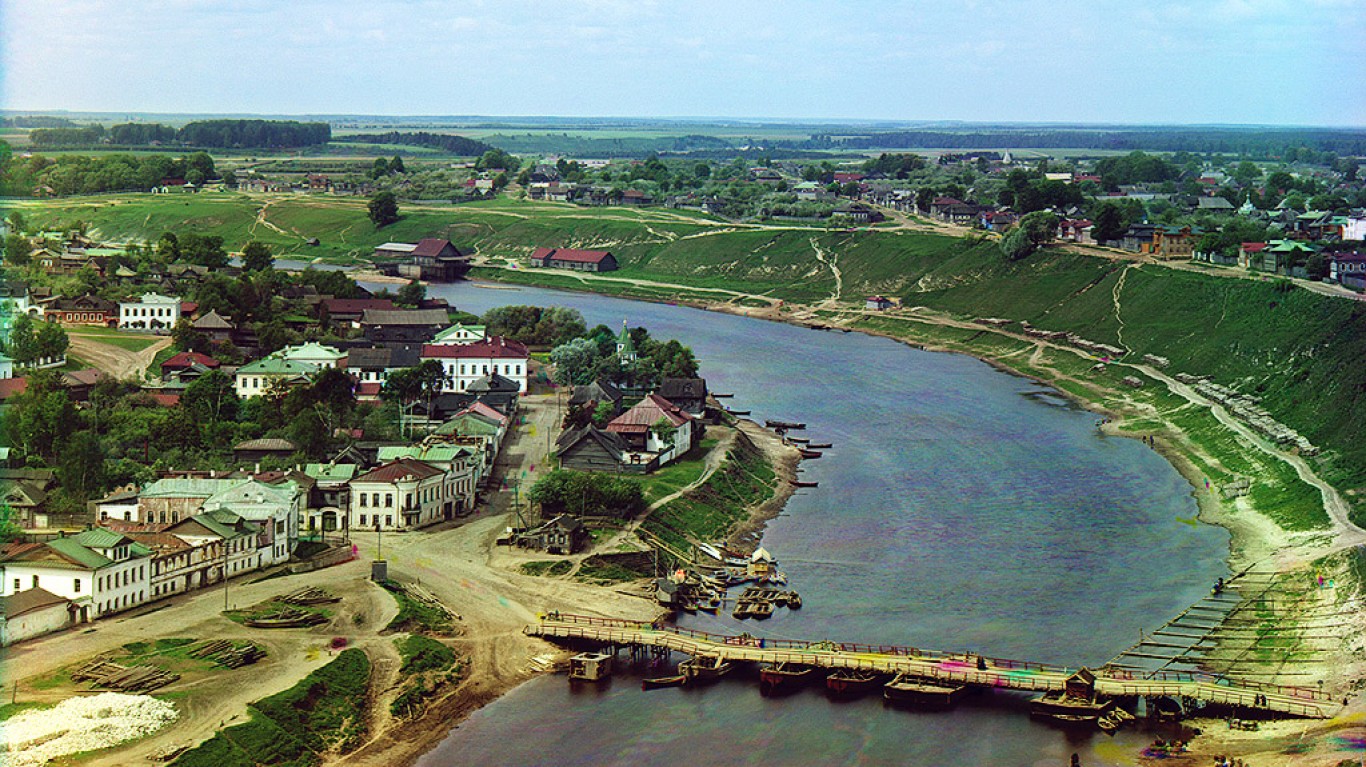
14. Volga River
> Length: 2,193 miles
> Source: Valdi Hills, Russia
> Outflow: Caspian Sea
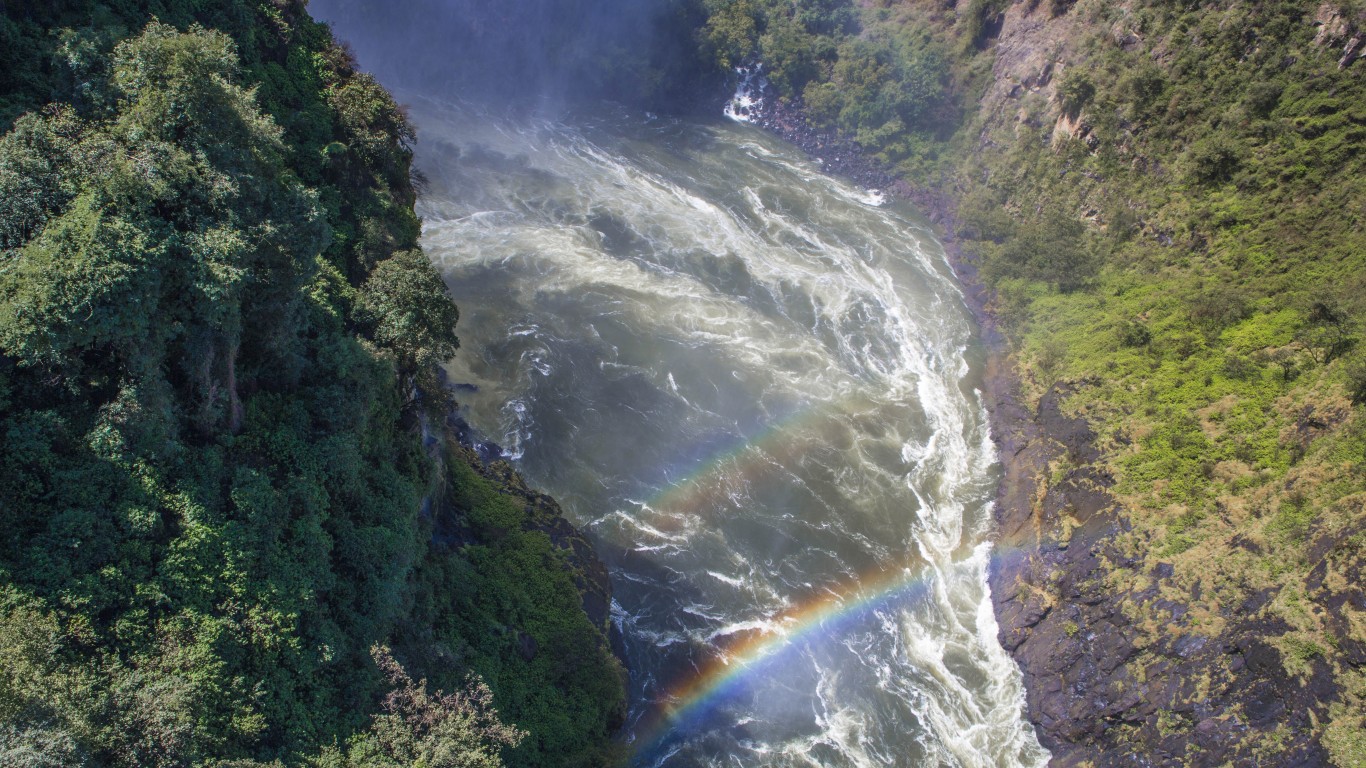
13. Zambezi River
> Length: 2,200 miles
> Source: Mwinilunga District, Zambia
> Outflow: Indian Ocean, Mozambique

12. Ob River
> Length: 2,268 miles
> Source: Biya and Katun rivers, Russia
> Outflow: Kara Sea
[in-text-ad-2]
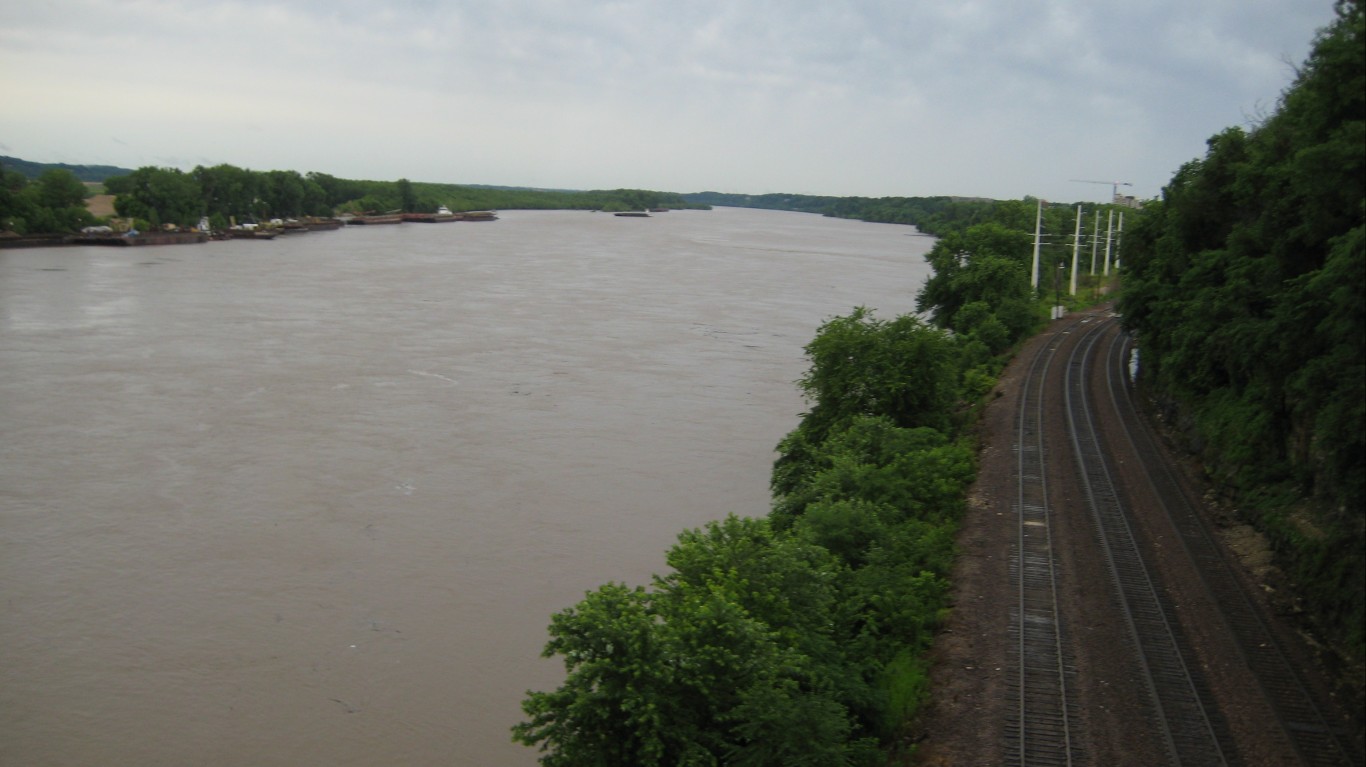
11. Missouri River
> Length: 2,315 miles
> Source: Centennial Mountains, Montana
> Outflow: Spanish Lake, Missouri

10. Mississippi River
> Length: 2,340 miles
> Source: Lake Itasca, Minnesota
> Outflow: Gulf of Mexico
[in-text-ad]
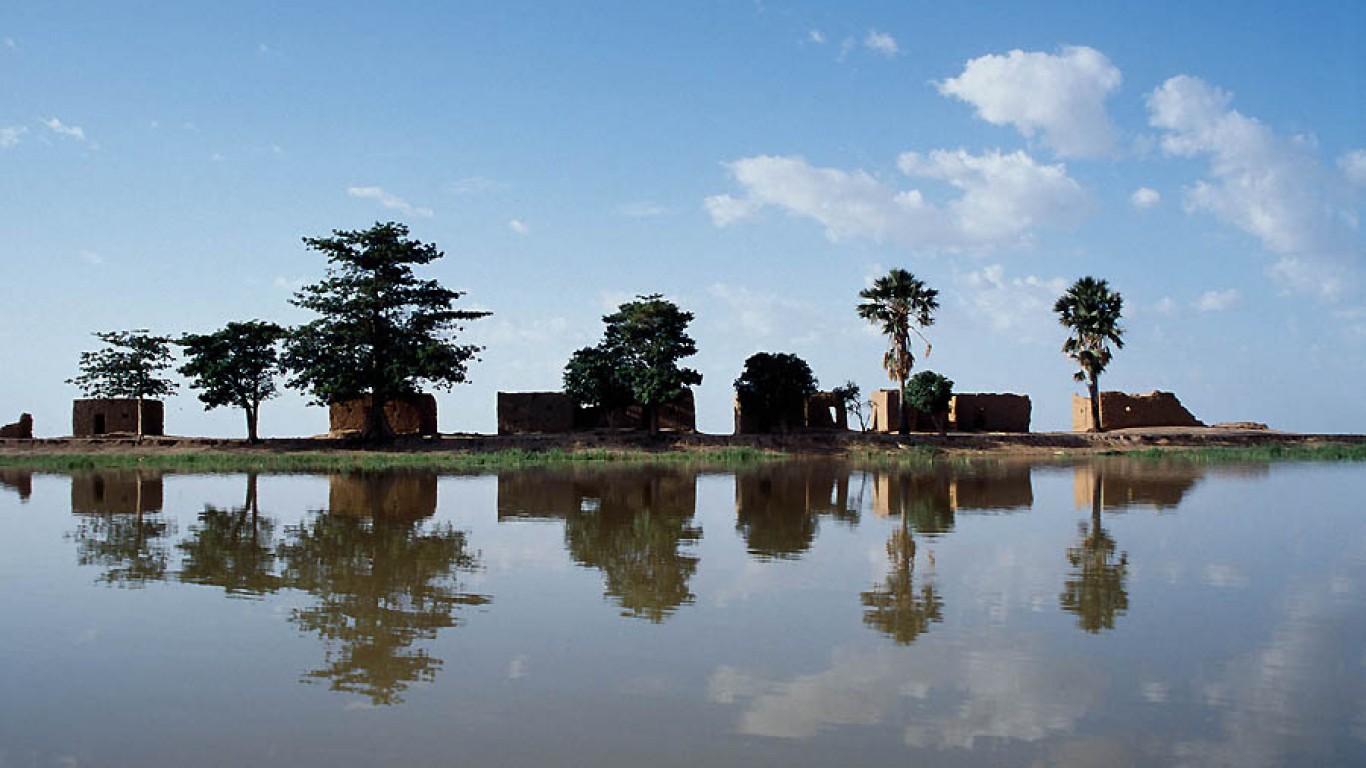
9. Niger River
> Length: 2,600 miles
> Source: Guinea Mountains, Republic of Guinea
> Outflow: Gulf of Guinea
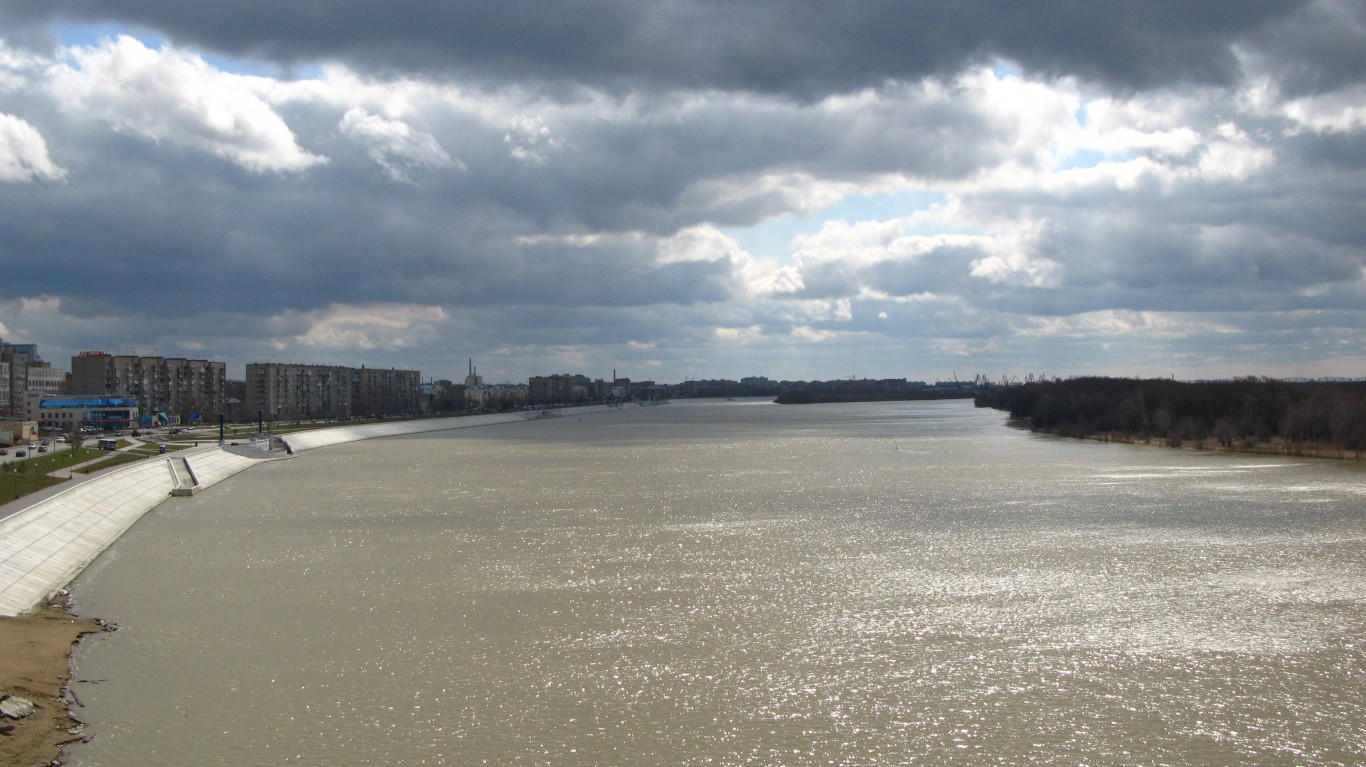
8. Irtysh River
> Length: 2,640 miles
> Source: Altai Mountains, Xinjiang Province, China
> Outflow: Ob River, Russia

7. Mekong River
> Length: 2,700 miles
> Source: Lasagongma Spring, Tibet
> Outflow: South China Sea
[in-text-ad-2]
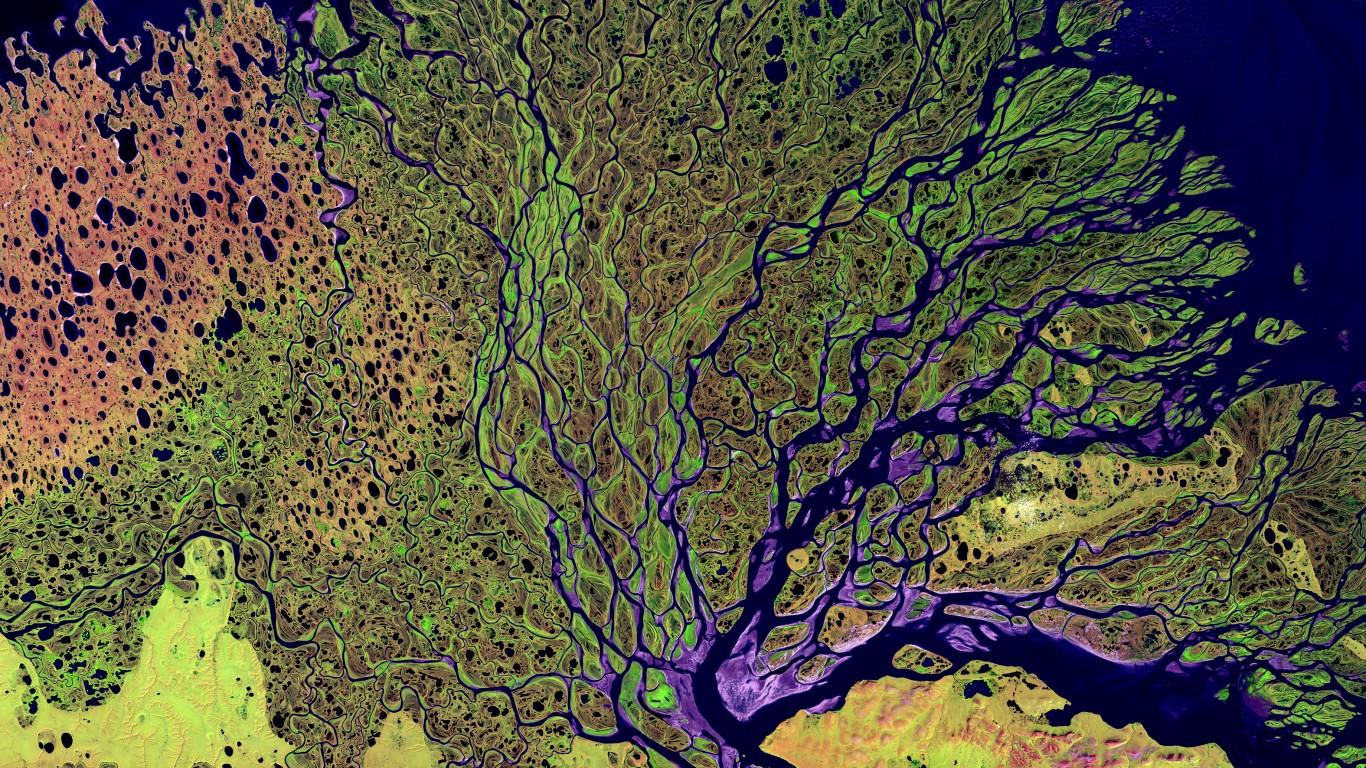
6. Lena River
> Length: 2,734 miles
> Source: Baikal Mountains, Russia
> Outflow: Laptev Sea
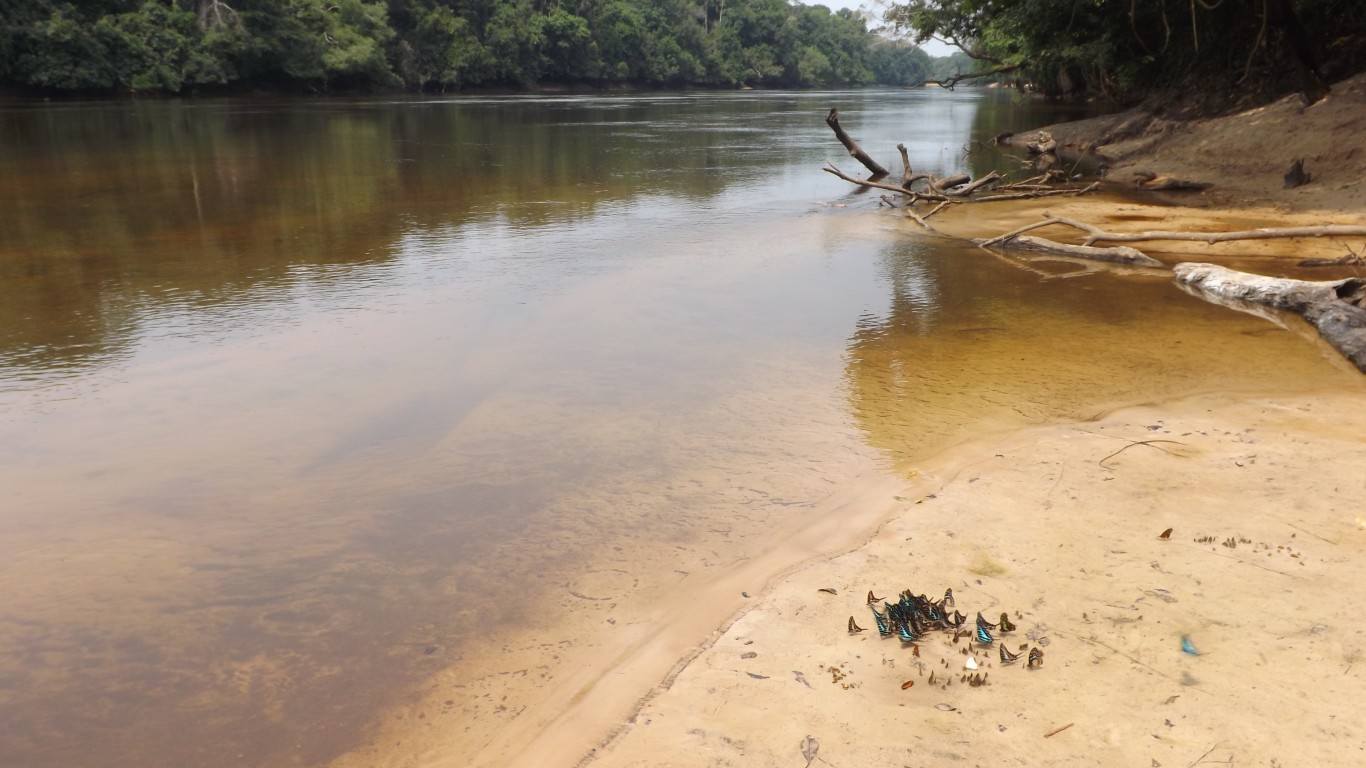
5. Congo River
> Length: 2,900 miles
> Source: Chambeshi River, northeastern Zambia
> Outflow: Atlantic Ocean, Democratic Republic of the Congo
[in-text-ad]
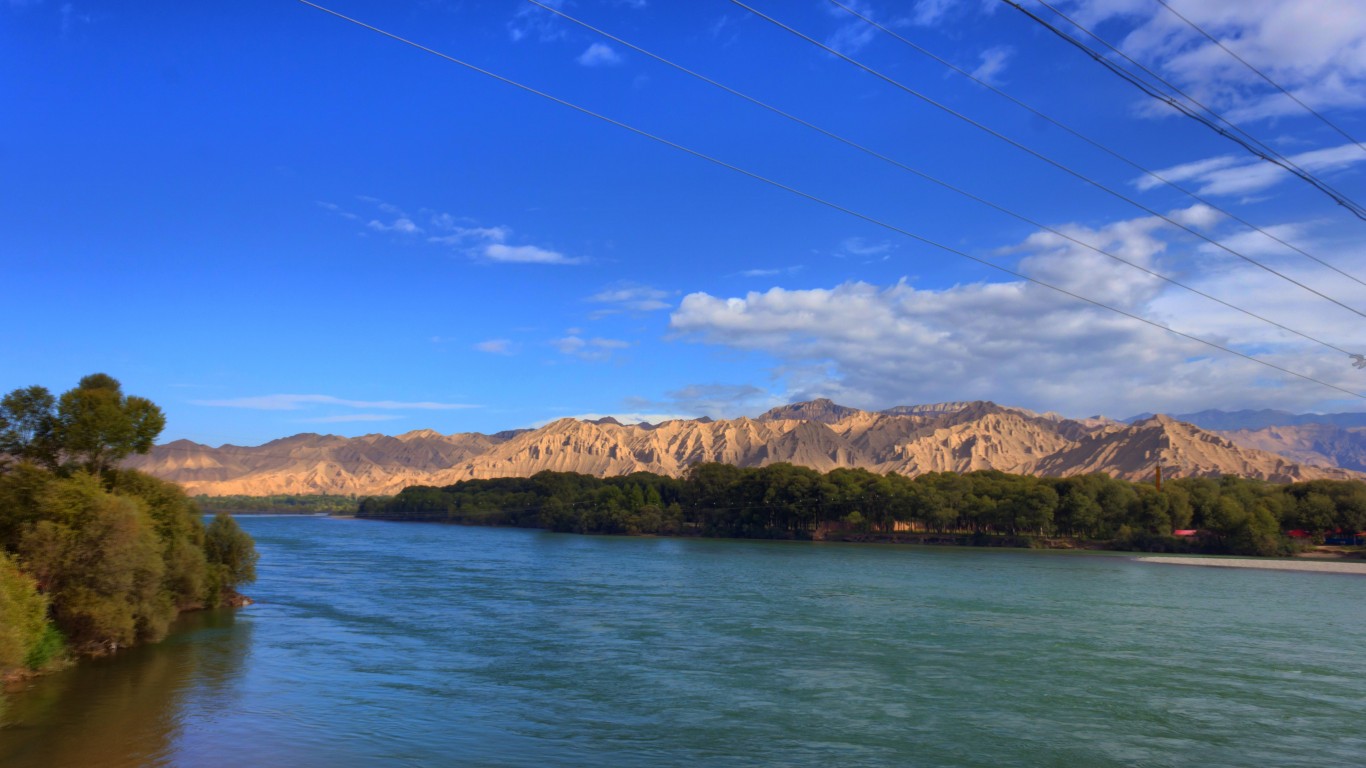
4. Yellow River
> Length: 3,395 miles
> Source: Bayan Har Mountains, Qinghai Province, China
> Outflow: Bohai Sea

3. Yangtze River
> Length: 3,915 miles
> Source: Tanggula Mountains, Tibet
> Outflow: East China Sea

2. Amazon River
> Length: 4,000 miles
> Source: Ucayali-Apurímac river system, Peru
> Outflow: Atlantic Ocean, northeastern Brazil
[in-text-ad-2]
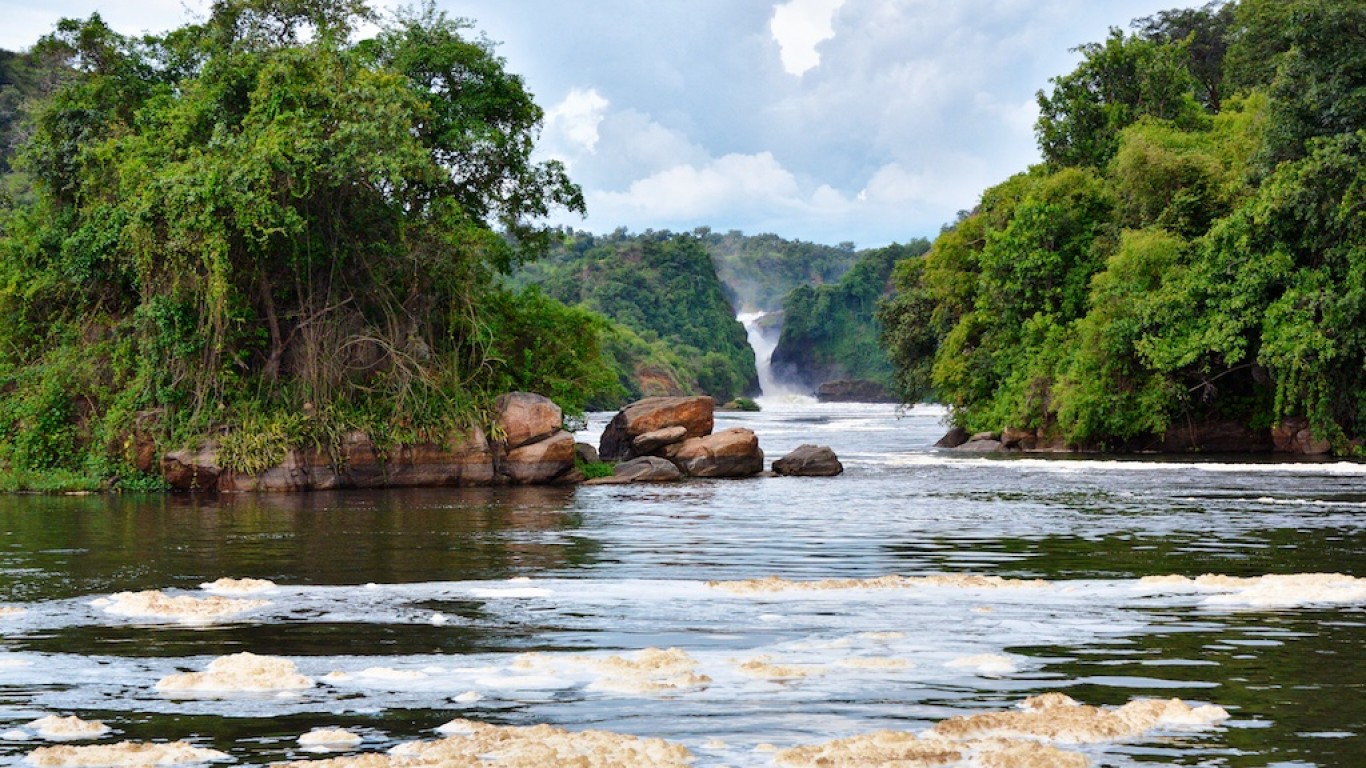
1. Nile River
> Length: 4,132 miles
> Source: Lake Victoria, Uganda
> Outflow: Mediterranean Sea
Detailed Findings
Many of the longest rivers in the world have played important roles in the development of the earliest known civilizations. Historians of ancient Mesopotamia, for example, often credit the fertility of the Tigris and Euphrates river pastures with the advent of agriculture. The steady supply of food allowed nomadic, hunter-gatherer cultures to settle into permanent communities, prompting further societal innovations such as writing and irrigation. Similar technological revolutions occurred in ancient civilizations along the Nile, the Indus River, and the Yellow River — the longest, fourth longest, and 18th longest rivers worldwide.
There has been a longstanding debate among scientists as to whether the Amazon or the Nile is the longest in the world. Various studies have attributed the most distant source of the Amazon to different locations throughout South America, changing the official length of the river. When measuring the Nile from Lake Victoria, Uganda, to the Mediterranean Sea and the Amazon from the headwaters of the Ucayali-Apurímac river system in southern Peru to the Atlantic Ocean, the Nile ranks as the longest river. However, the Amazon is generally agreed to be the largest river by volume and the system that supports the most biodiversity on the planet.
Methodology
To identify the longest rivers in the world, 24/7 Wall St. reviewed various expert sources, primarily the Encyclopedia Britannica. Length was generally defined as the distance from a river’s source to its mouth or confluence with another major river. Locations of a river’s source and mouth also came from various sources.
If you’re one of the over 4 Million Americans set to retire this year, you may want to pay attention.
Finding a financial advisor who puts your interest first can be the difference between a rich retirement and barely getting by, and today it’s easier than ever. SmartAsset’s free tool matches you with up to three fiduciary financial advisors that serve your area in minutes. Each advisor has been carefully vetted, and must act in your best interests. Start your search now.
Don’t waste another minute; get started right here and help your retirement dreams become a retirement reality.
Thank you for reading! Have some feedback for us?
Contact the 24/7 Wall St. editorial team.